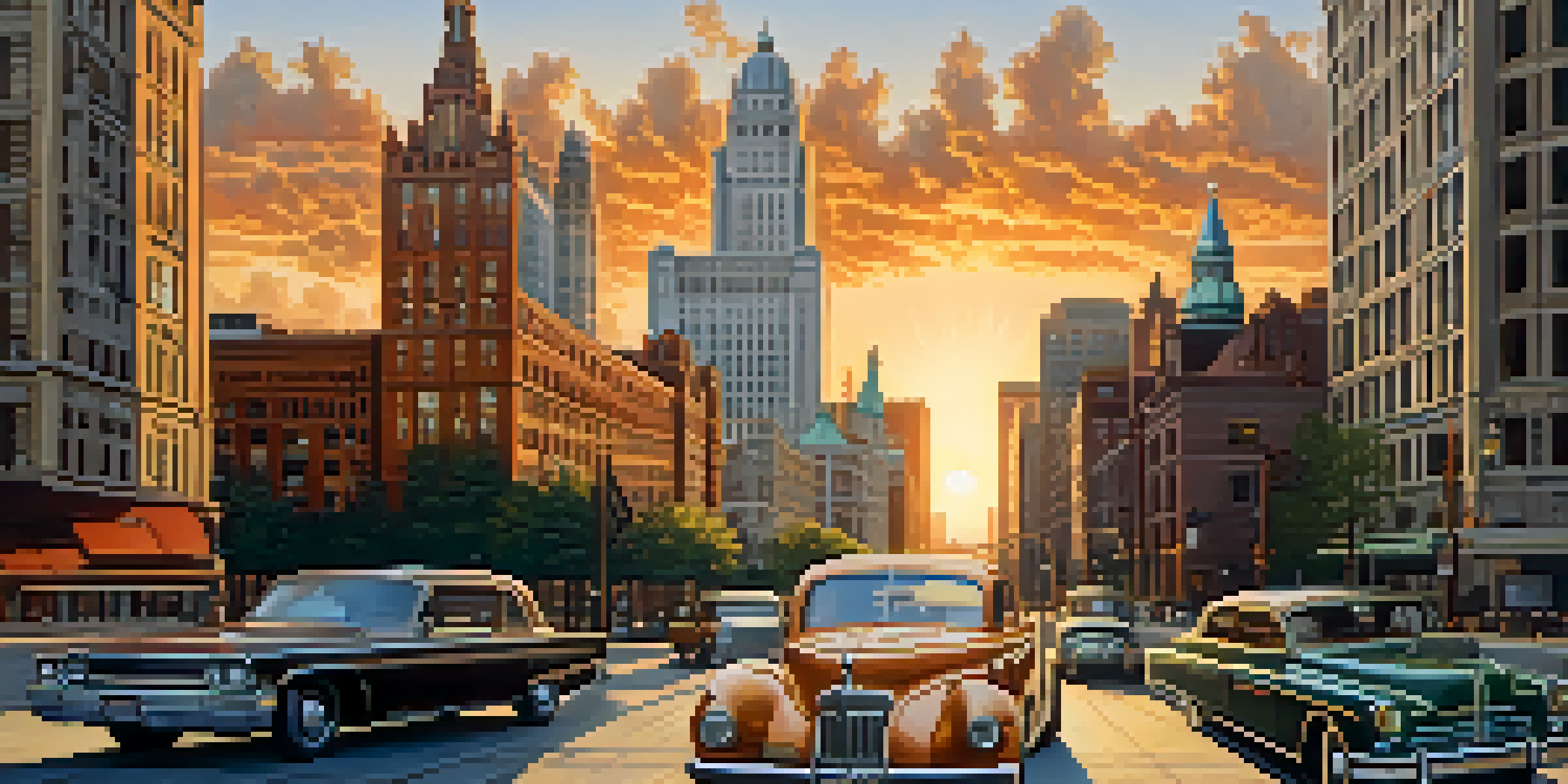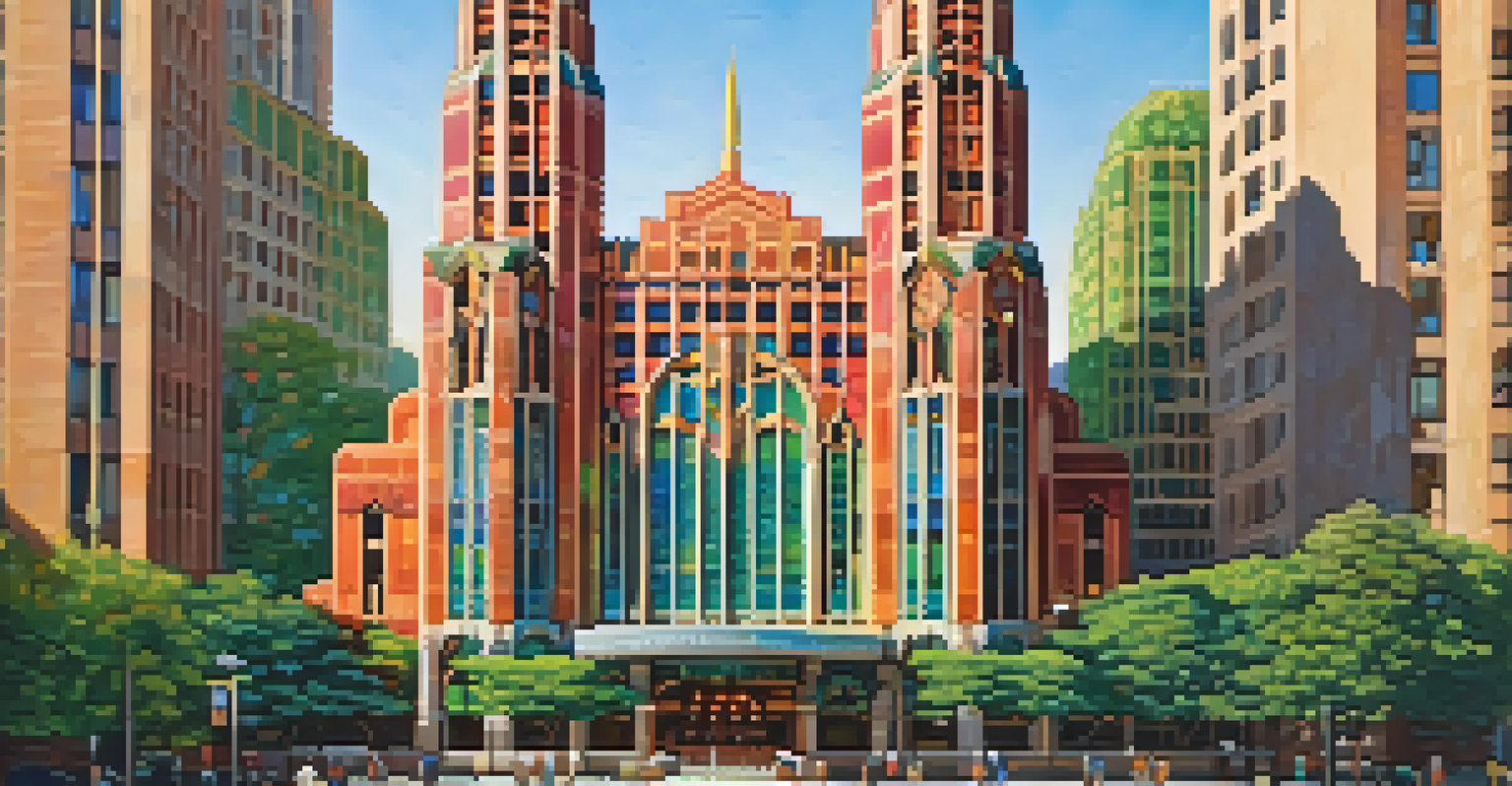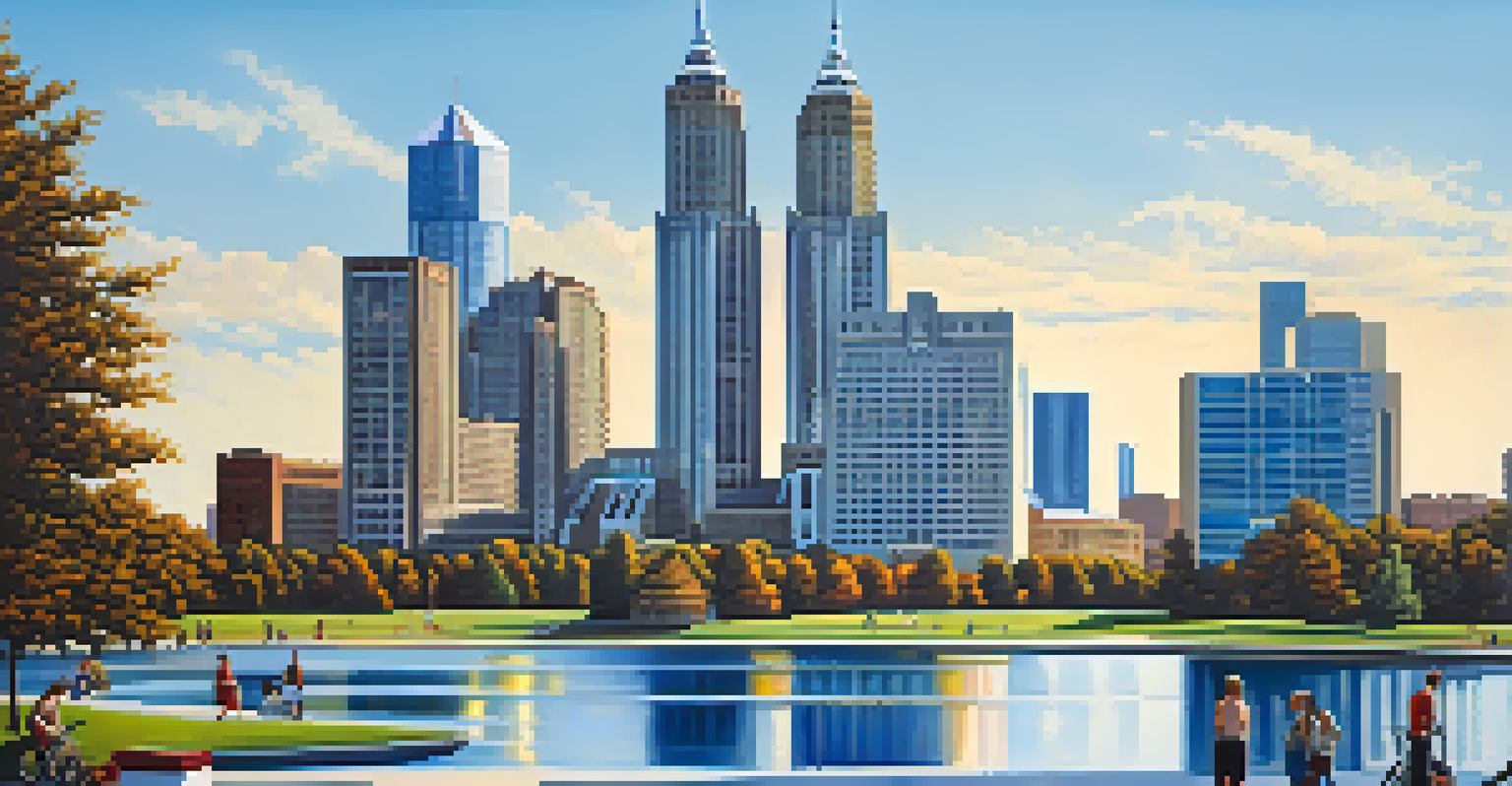The Rise of Detroit Skyscrapers: A Historical Overview

The Early Beginnings of Detroit's Skyline
Detroit's journey to a striking skyline began in the late 19th century. The city's booming economy, fueled by the automotive industry, attracted architects and builders eager to make their mark. Early skyscrapers like the Dime Building and the Detroit Savings Bank Building set the stage for a new architectural era.
Architecture is the art of how to waste space.
These early structures, often influenced by the Beaux-Arts style, showcased intricate designs and towering heights that captured the spirit of the city. They not only provided office spaces but also symbolized Detroit's ambition and prosperity. As the city grew, so did the desire to reach new heights in architecture.
By the early 20th century, Detroit was on its way to becoming an iconic skyline. The architectural innovations of this era laid the groundwork for more daring designs that would follow, making the city a canvas for architectural experimentation.
The Boom of the 1920s: Skyscrapers Take Flight
The 1920s marked a golden age for Detroit's architecture, with numerous skyscrapers rising in rapid succession. Buildings like the Guardian Building and the Penobscot Building showcased the Art Deco style, characterized by bold geometric shapes and lavish ornamentation. This period reflected not only economic prosperity but also a cultural renaissance within the city.

As the skyline expanded, so did the ambition of architects who sought to create landmarks that would define Detroit for generations. The Guardian Building, often referred to as the 'Cathedral of Finance,' became a symbol of the city’s wealth and artistry. People marveled at its stunning mosaics and intricate details, solidifying its place in architectural history.
Detroit's Architectural Evolution
Detroit's skyline has transformed from early 19th-century structures to modern skyscrapers, reflecting the city's economic highs and lows.
This architectural boom not only transformed the skyline but also contributed to Detroit's identity as a major urban center. The skyscrapers of the 1920s became a testament to human ingenuity, creativity, and the relentless pursuit of progress.
The Challenges of the Great Depression
The onset of the Great Depression in the 1930s brought significant challenges to Detroit's skyscraper construction. Funding dried up, and many ambitious projects were put on hold or canceled altogether. Despite this, some buildings were completed, reflecting a more subdued architectural style during this tumultuous period.
The details are not the details. They make the design.
The Financial District saw the completion of the Michigan Consolidated Gas Building, which, although less extravagant than its predecessors, still embodied resilience. The skyline began to reflect the economic hardships faced by the city, as fewer skyscrapers were constructed and existing ones struggled to maintain occupancy.
This challenging period, however, did not diminish Detroit’s architectural spirit. It served as a reminder that even in times of adversity, the city continued to dream of a brighter, more prosperous future, and the skyscrapers that remained stood as symbols of hope.
Post-War Expansion: A New Era of Skyscrapers
After World War II, Detroit experienced a surge of growth that revitalized the city and its skyline. The post-war economic boom ignited a wave of new skyscraper construction, with modernist designs that emphasized sleek lines and functionality. Buildings like the Renaissance Center began to redefine the city’s image on a global scale.
The Renaissance Center, with its futuristic design and complex of interconnected towers, became an iconic symbol of Detroit’s resurgence. It not only provided corporate office space but also included retail and dining options, creating a vibrant community hub. This shift toward multifunctional spaces reflected the changing dynamics of urban living.
Resilience Amidst Economic Struggles
Despite challenges like the Great Depression and the decline of the automotive industry, Detroit's skyscrapers symbolize hope and the city's enduring spirit.
During this era, Detroit's skyline became a blend of historic structures and modern designs, showcasing the city's adaptability and resilience. Each new skyscraper added to the narrative of a city that was continuously evolving, embracing innovation while honoring its rich architectural heritage.
The Challenges of the Late 20th Century
As the late 20th century unfolded, Detroit faced significant economic and social challenges that affected its skyline. The decline of the automotive industry led to a population exodus and a decrease in demand for office space. Many skyscrapers fell into disrepair, and the once-bustling downtown area began to feel desolate.
Despite these hardships, some buildings were repurposed or restored, breathing new life into the city. The rehabilitation of the Book Tower and the grandeur of the Fox Theatre highlighted a commitment to preserving Detroit's architectural legacy. These efforts served as a reminder of the city’s storied past even amidst struggles.
This period underscored the importance of resilience in the face of adversity. While the skyline may have reflected economic downturns, it also showcased the determination of Detroit’s residents to reclaim their city and its identity.
Revitalization Efforts in the 21st Century
Entering the 21st century, Detroit embarked on a journey of revitalization that reinvigorated its skyline and neighborhoods. Initiatives to attract businesses and residents back to the city led to the construction of new skyscrapers and the renovation of historic buildings. Projects like the One Campus Martius and the Hudson's Site have sparked renewed interest in urban living.
These revitalization efforts have not only transformed the skyline but also fostered a sense of community. New parks, retail spaces, and cultural attractions have emerged, turning downtown into a vibrant destination for both locals and tourists. The skyline now tells a story of rebirth, innovation, and hope for a brighter future.
Revitalization in the 21st Century
Recent urban development initiatives have revitalized Detroit's skyline, fostering community and attracting new businesses and residents.
This focus on urban development highlights Detroit's adaptability and the enduring spirit of its people. As skyscrapers rise and neighborhoods flourish, the city continues to redefine itself, proving that even in the face of adversity, growth and renewal are possible.
The Cultural Significance of Detroit's Skyscrapers
Detroit's skyscrapers are more than just architectural feats; they are cultural landmarks that embody the city's history and identity. Each building tells a story of the people, industries, and events that shaped Detroit. From the historic grandeur of the Book Tower to the modern lines of the Detroit City Tower, these structures are a celebration of the city's resilience.
The cultural significance of these skyscrapers extends beyond their physical presence. They serve as gathering places for community events, art installations, and festivals, reinforcing the connection between architecture and the city's vibrant culture. As people gather beneath these towering giants, they create shared experiences that strengthen communal ties.

In many ways, the skyscrapers represent the soul of Detroit—an enduring testament to the city's creativity, diversity, and spirit. As the skyline continues to evolve, it reflects the dynamic nature of the community and its ongoing story of growth and renewal.